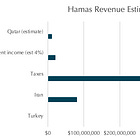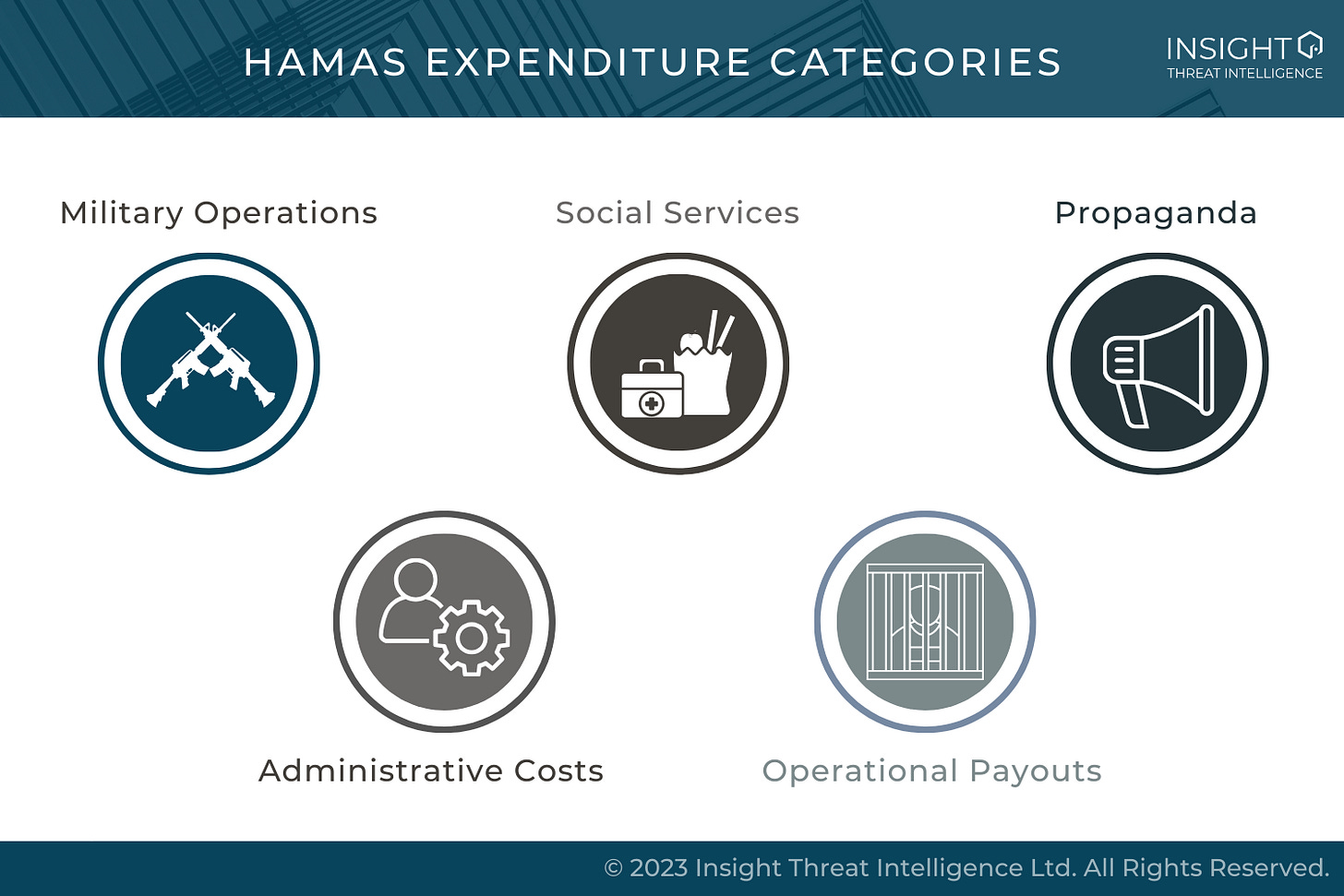Last week, we looked at how Hamas raises funds. Once the organization acquires the money, what does it spend it on? With estimated revenues as high as $590 million per year, there is a lot that Hamas can buy. Some of the groups’ expenses are obvious – such as using funds to purchase weapons and to conduct military operations. However, Hamas also spends funds on social services, administrative costs, and other expenditure streams. Keep reading to learn more.
Military Operations
Hamas spends a significant amount of money on arming and sustaining the military wing of the organization - the Izz ad-Din al-Qassam Brigades. In 2016, the Times of Israel reported that Hamas spent over $100 million a year on the military wing - training, and conducting various operations. Hamas’ attack on Israel earlier this month used a combination of drones, cyber attacks, and between 2,500-5,000 rockets in a single day, requiring significant resources.
To equip the operations, Hamas also spends money on weapons, ammunition, and the facilities necessary to produce local weapons, including rockets, mortars, rifles, and bullets. The group often recycles materials to make the armaments, including scrap iron, from Gaza infrastructure that has been destroyed.
Hamas also finances the construction of tunnels used for military purposes. Digging the tunnels allegedly accounted for nearly $40 million of the 2016 annual military budget. The average salary for an excavator was reported to be $250-400 a month, with veteran diggers receiving higher salaries and excavators being incentivized to meet deadlines through the offering of bonuses. The tunnels are then used to smuggle weapons from Iran, cash, and other materials.
Social Services
With billions of dollars in humanitarian assistance flowing from international donors and charities to Palestine throughout the years, some of the money gets funneled to Hamas to deliver the aid. Hamas provides several governance institutions and services, including schools, hospitals, and charities, through their social service wing – Dawah. By 2000, Hamas and its affiliates ran nearly 40% of the social institutions in the West Bank and Gaza. In recent years, a significant amount of Hamas’ expenditure continues to be used for housing, food, water, medical, educational, religious, and even financial aid programs. In 2013, nearly 40% of Hamas’ budget was tied to transfer expenses including pensions and social welfare allocations, and capital and development expenditures - such as building roads and schools.






